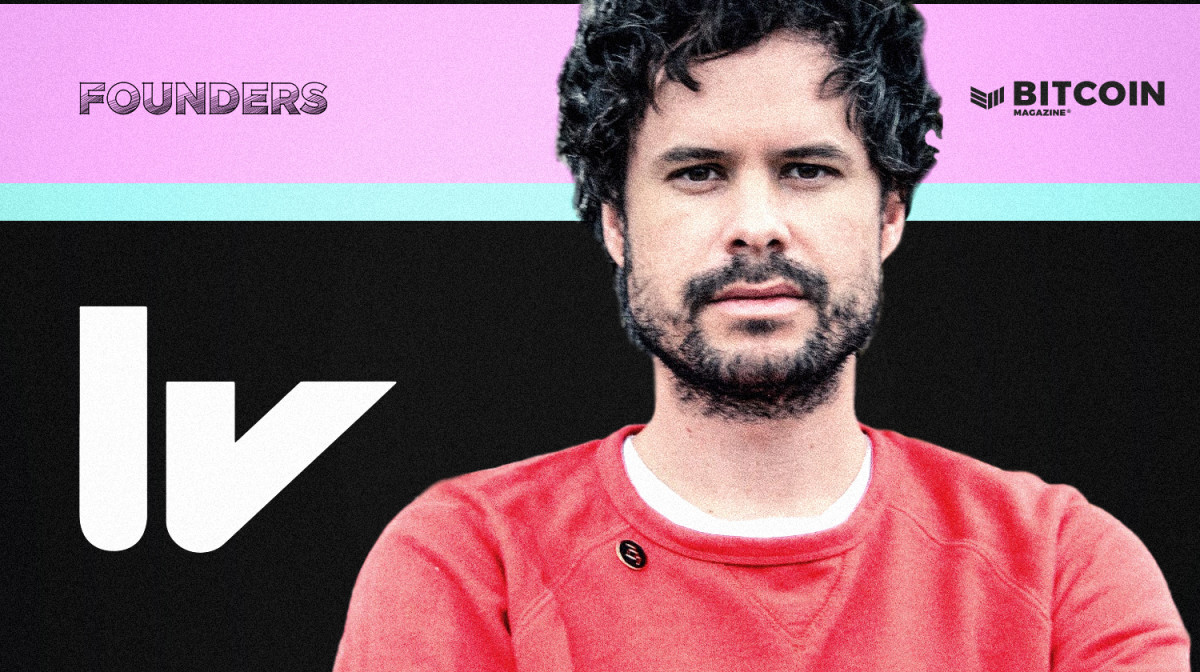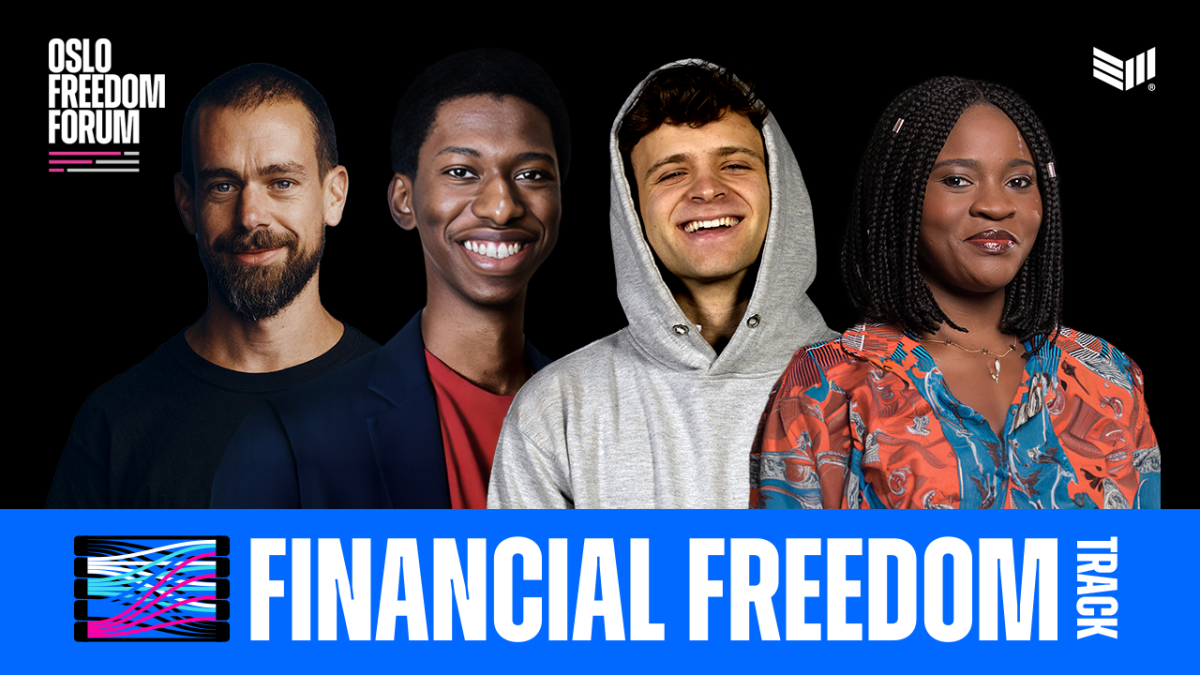Month: June 2024
US dollar rises as strong service sector data muddles Fed easing this year
Post Content
Taking Bitcoin Mainstream, One Stream At A Time On Wavlake
Founders: Sam Means and Michael Rhee
Date Founded: 2022
Location of Headquarters: Chicago,IL; New York, NY and Phoenix, AZ
Amount of Bitcoin Held in Treasury: N/A
Number of Employees: 3
Website: https://wavlake.com/
Public or Private? Private
Sam Means is bringing the DIY spirit of punk rock to Bitcoin.
Means, co-founder of Wavlake, a music streaming platform that employs both Bitcoin’s Lightning Network and Nostr, has been innovating in the music industry since the early 2000s. From promoting local shows to helping manage his own band as it toured the world to running a major artist merchandise business, Means has put in the work and learned more than a handful of lessons along the way.
Now, he’s taken those lessons and combined them with what he’s learned from his ten years of experience in the Bitcoin space to help create Wavlake, a music streaming platform that cuts out the middleman, allowing fans to stream sats to directly to their favorite musicians. Wavlake is a counter to Spotify, well-known for hardly paying many of the artists featured on its platform.
In my interview with Means, we discuss his journey in the music industry, how he found and learned about Bitcoin, the process of creating Wavlake and how he balances his time between Wavlake and his other business endeavors.
A transcript of our conversation, edited for length and clarity, follows below.
Frank Corva: You are the co-founder of Wavlake, the founder of the Lightning Store, and I just learned you also own a band merch company. Is this correct?
Sam Means: Yeah. So, I should probably stop calling it my main business, but my oldest business is Hello Merch. We do e-commerce, screen printing for tour fulfillment, direct-to-customer fulfillment. It’s like a one-stop shop for merch if you’re a band.
Corva: I’d like to hear how you balance all of that, but let’s start with how you got involved with music.
Means: I’ve done sort of everything. [It started] with punk bands. Some of these bands were playing in Mesa, Arizona, and I was from the suburbs. I got a car, piled all my friends in it and we started going to $5 punk shows in basements. That changed everything for me.
I started working at a venue and then started a promotion company with a couple friends. The whole time I was in bands. I was in three bands with this dude — we just kept starting bands until one of them was successful. We got signed to a major label, got dropped, and then decided to do everything ourselves.
We started our own label, got distribution and worked with a really cool management company. We used all the DIY stuff that we learned at “punk school.” We built up a really good following. We were touring constantly.
All through that, I really solidified all the music business stuff. I was always the responsible dude in the band that was dealing with merch and getting paid.
Long story short, I wore a lot of hats in the business and eventually started a merch company. We had a friend who learned how to screen print. We set up an e-commerce store in 2005, which was very difficult to do. Shopify didn’t exist then.
Fast-forward to 2014, I’d been hearing about Bitcoin from a friend of mine. He’s still around. Shout out to Mike Jarmuz.
Corva: Mike Jarmuz from Lightning Ventures?
Means: Yeah. He’s a friend of mine from middle school and was part of that whole story I just told. He started the label that put out my first band’s first record.
He also told me about Bitcoin. He’d moved to New York, started a bar and was one of the first places in New York to have a Bitcoin ATM.
By this point, I was using Shopify for Hello Merch, and I saw that you could accept Bitcoin with Shopify. I was like, “Alright, well, I’m still kind of sketched out by this, but if some people want to give it to me in exchange for band merch, I guess that’s okay.”
In 2017, I heard about the Lightning Network. I set up a couple of nodes — didn’t know what to do with them — and just turned them on. I was just like, “I’m helping” [laughter].
A couple of years later, I heard Paul from Sphinx on Marty Bent’s podcast. I started looking into it and saw that you could upload music to it. I was like, “What’s stopping me from creating a Sphinx room and just calling it like the Lightning Music Room or something?”
So, I did that and uploaded all my music to. I took an RSS feed, put it into the podcast index and was like, “Hey everybody, look, you can stream music over Lightning.”
Corva: Wow.
Means: Then, I started this thing called the Lightning Store. It was just an experiment. I said, “I’m going to just put out a bunch of bootleg music shirts, like West coast punk mashups on T-shirts with subtle Bitcoin things and find all the super big music nerds in Bitcoin if there are any.”
“If they know who the Descendants and Black Flag are and they’re into Bitcoin, there might be a chance they could at least like — cause I’m not a technical person — walk me through what needs to technically happen in order to make this actually happen instead of just fumbling.”
Corva: That sounds like a fun way to go fishing for help.
Means: It was totally fishing. People were literally like, “What is this? What are these shirts? We can’t even buy them because you have no liquidity in your node.” I had people from Lightning Labs DMing me being like, “Hey, dude, like this stuff looks super cool, but no one can buy it because you don’t have any liquidity.” I was like, “What’s that?” It was really fun. I did that in the very beginning of ‘21.
Then, I started going to more conferences and connecting people with people that were building things adjacent to what I was trying to see happen.
And then this dude Michael Rhee from Chicago built this thing called Wavlake. It wasn’t exactly what I was hoping to see, but it was something. It was like, “Okay, this guy made a thing where you can connect it to your node and you can upload music and get paid without having to upload it through Anchor or something. It [wasn’t live] yet, though.
So, I helped him test it before he launched it. I was also helping with Lightning Ventures at that point. I got Michael on a call with [the team at Lightning Ventures] to see how we could help him.
It was just too technical, though. It was a cool idea, but it just wasn’t exactly catching on for a number of reasons. After that, I sort of lost touch a little bit.
Then, I bumped into him at a Bitcoin conference in 2022. He was like, “Hey, I’m gonna have to get a job. Only 27 people have signed up for [Wavlake].”
I was like, “Okay, don’t stop because like you’re on the right path. Somebody needs to do this.” Then, I had this idea. I called him and said, “I think you need to change the entire thing. Would you want to maybe just start over and launch a [new] product?
Corva: When was this?
Means: October of ‘22. We reorganized the whole business and started over. In January of ‘23, we relaunched with a completely different product and brand.
By that summer, we had met Ainsley Costello. She became the first Wavlake superstar. She’s got a new song out today called “People Pleaser,” and people should check it out.
Then, Nostr came along almost immediately after we launched. We’d had this long-term vision of how we could make this a social thing down the road, but there aren’t a lot of social layers on RSS. Nostr was essentially just a second way to distribute these files. We were like, “Hey, we can publish on RSS and then publish to relays.”
Corva: Is Wavlake a Nostr client?
Means: One of our products for artists is called Wavlake Studio. That’s where you upload your music. When you upload your music, it distributes to RSS.
We automatically push that to the podcast index and any client that’s reading that index and has a monetization capability will have the ability to pull that song into their library. It’s tagged music.
Anything pulling in the music tag is going to see that library and then we simultaneously push it. We created a Wavlake relay that we push it out to.
So, every song gets published as a Nostr note, but pushes off of RSS. It just happens on a website and gets pushed to these channels. So, just think of them as distribution channels.
When we started seriously thinking about Nostr, we decided, “Well, there’s a couple of things here we can do. One, we can allow people to log in with Nostr on Wavlake. So, if you just want to be a listener and you don’t want to create an account, you can just log in with your Nostr account and interact.”
Then, we started thinking, “Okay, well, if we are going to utilize Nostr for a lot of social elements, most of those are going to happen in a mobile app. So, we [built] a thing called Wavman, which was our Nostr player proof of concept.
Our mobile app for iOS and Android is still in beta. That is an absolute Nostr client. When you sign up, you’re given a private key and a public key, or you can just log in and interact.
Corva: It sounds like it was a pretty organic process.
Means: Wavlake started as a conceptual thing to see if music could work on Lightning. I wanted to see it happen because the potential is so strong for this thing to completely change the infrastructure that we exist in today as musicians.
In my experience, you have to start somewhere. If you want to be in a band, you can’t just be like, “It’s fun — we played three shows and then broke up and then I got a job.” You have to just keep pushing through.
I thought it was a good idea. It just needed some work. We will just keep doing it until it works. Or at least until somebody else with a lot more money comes along and takes the idea and makes it work.
At the very least, we may just be like a spark for a bigger idea. Maybe TIDAL comes along and enables this.
My ultimate goal is just to see this change the music industry. I don’t care who does it. If we play a small part in that, that’s fantastic.
Corva: Let’s say you continue to iterate and Bitcoin becomes more normalized. How long would it take for Wavlake to replace something like Spotify?
Means: We have good Bitcoin service providers. We have wallets. We have all the fundamental stuff in place and working.
We have the money that’s so strong and being talked about in the mainstream media every single day. There’s a ticker for it on TV.
It’s time to bring in the mainstream. It’s time to bring in the normies. Let’s get them here. And we’re not going to do that with boring…
Corva: Lectures in Austrian economics?
Means: Yeah, and like, and like steak dinners and stuff. We’re going to bring them in with music and entertainment and social media.
Bitcoin is for everyone, and we need to build the stuff for everyone to use it. I think that we have a very good chance at helping a lot because right now we’re one of the main ways for music to waltz into both Bitcoin and Nostr.
Corva: Absolutely. But while you’re trying to do this, how do you balance your time between Wavlake, Lightning Store and Hello Merch?
Means: With Lightning Store, I have a fulfillment center, but I still pack all my own Lightning Store orders. I still like to put free stickers [in the shipments]. It’s just a thing I do for fun. Even when it gets kind of crazy, like when Jack wears the Satoshi shirt at the Super Bowl next to Beyoncé and Jay-Z and things get busy, it stresses me out, but I still will pack every single one of those orders.
With the merch stuff, I have a really good team in Arizona that helps keep that thing going. It doesn’t require a ton of day-to-day work.
And we’re still so small with Wavlake.
It’s tough to balance stuff, but I’ve always had a lot of things going on. I function better when I have more things happening. I’ll only work with things that I think can ultimately work together.
So, these are a lot of different things, but they’re all in the same world. It’s like, I make music, I sell merch. I sell merch for bitcoin. I’m a Bitcoin person. I have a music company that’s in Bitcoin and also has merch. All these things connect.
Corva: How much do some of the bigger artists on Wavlake make?
Means: The best metric here is that most artists who are active on Wavlake are averaging about 12 cents a zap.
It’s not about the total amount that they’ve made. Ainsley Costello has been on a lot of podcasts saying she made $1,500 in her first couple of months, and she had only made maybe $600 in her whole lifetime as a musician. She’s 19 or 20 now and has been doing this since she was a kid and has only seen $600 or $700.
It’s more about hope. People who really get it are getting it because a lot of these other things like these shitcoins and NFTs that are about making money really fast — everyone’s sick of that. Artists are looking for sustainability.
Just took Man Like Kweks. He’s been very vocal about how he’s like paying his utility bills with what he’s making on Wavlake.
We also just did an interview with this really great poet OKIN who’s in a group called…
Corva: Black Vulcanite?
Means: Yeah, Black Vulcanite. He made [the equivalent of] 500 Namibian dollars [from boosts and zaps on Wavlake] last month. That’s about $80 US dollars.
So, yeah, there’s hope. All of these things are out there that actually have a chance to help people in a sustainable way. It’s going to bring bands closer to their fans, which I know, based on my experience, is the most important thing.
Corva: You’ll be working with Bitcoin Magazine on a vinyl release. Can you tell me a little bit about this?
Means: Yeah, we did a really cool contest where existing Wavlake artists or new artists could just upload music to Wavlake and the 21 songs that earned the most sats would go to the next level. 11 artists out of those artists who made those 21 songs ended up on the record.
Man Like Kweks, Ainsley Costello and Joe Martin will be on there. It’s going to be available at the Bitcoin conference. We’re also doing a concert there on July 25, industry night, with Ainsley Costello, Joe Martin and JUSTLOUD, who’s been burned by the industry and is hopeful with what’s happening in this [Wavlake] world.
Corva: Awesome. That sounds like a lot of fun.
Means: It’s been cool to find the Bitcoiners, and we’re happy for all the support in this community. We’re just going to keep doing our thing.
What is Bitcoin? You don’t know and you can’t explain it!
Bitcoin is digital gold.
Bitcoin is an inflation hedge.
Bitcoin is money.
Bitcoin is a technology.
Bitcoin is software.
Bitcoin is hope.
Bitcoin is an electrical system.
Bitcoin is a heating system.
The reality is that all of them are wrong, in the sense that all of them are just a partial description of what Satoshi Nakamoto started. That second word, “is,” is where the problem is. Even though Bitcoin is all of them, if you say only one of them, you are limiting your understanding of it. The only true answer: Bitcoin is Bitcoin. We have to realize all the properties that Bitcoin has and describe it as such without putting a limit on it. Because the person who says Bitcoin is an inflation hedge has already experienced when it wasn’t. The person who said it is digital gold is suffering from the argument of lacking metallic properties. The person who says it is money will miss the whole PoW aspect of harvesting the electrical and heating energy in the real world, and so on and so on.
Every single invention or discovery in the human race was unknown at the point of the discovery. If it is unknown, how can you possibly describe it in one word or a sentence?
Until the whole of humanity assigned a word for it, the language stayed limited, and the language had to evolve around reality to describe it properly. We are still currently trying to assign words for what Bitcoin is, and they all fail at some point. Just to be clear, the descriptions failed – the reality of Bitcoin continues to be.
Even the real Bitcoin maxis that understand it on a deep level still struggle to penetrate the collective consciousness because we are trying to describe an unknown, and with the current human language that has not evolved enough. Not only has it not evolved, but even with the new terms that have been incorporated, it is a different language for outsiders.
Bitcoin’s monetary policy is governed by the difficulty adjustment, the halving schedule, and the consensus mechanism.
This sentence, although correct, is not understandable. You can’t teach someone a new language by explaining it in the new language. We have to correlate all the words one by one to the language that the person already knows. To make things worse – what happens when you are trying to explain something without language around it? The only possible solution is to observe the new thing and all its properties and experience it. When you do all that, then new words will emerge because the current ones are just insufficient.
We are not helping people by teaching them philosophy about Bitcoin. That is for the bookworms and the Bitcoin cultists like me, who have the time to do it and who like learning things this way. For all the others, that is a very unnatural way of learning. When kids are small, how do they learn before they can speak, read, or understand the language that their parents speak? Are they stupid, and the toxic maxis have to say to them, “Have fun staying poor”? I don’t think so. They learn from experiencing everything through their senses. That is a lot more learned information than the input from speaking and reading. When they enjoy the experience, they continue to do it! If they experience pain or discomfort, they stop doing it!
The beauty of Bitcoin is that there is pain for people who do not use Bitcoin, and there is significant enjoyment when you optimize your life with all the experiences that it can bring you. That is the focus of Breez and our whole team: to build the technologies that are going to give that experience to them. We will teach them through experiences, not through promises of the future.
Talk is cheap, as people say, and orange-pilling is a method that targets a tiny section of the whole population. Experiences can be for anyone, and they experience it NOW. They do not have to wait for the experience of the Number Go Up in the future; they experience the utility now. Give them the experience if you want to keep them. This achieves things in a way that the language and the problems of the description are irrelevant. You are creating a deeper understanding for every person going through the experience, and they will not go back if you solved their problem. There is a real-life example of what I am talking about.
Dale Carnegie observed reality and figured out something that nobody else did. He figured out how to use the hardest metal in a way that nobody used before. He realized that this thing would change the construction industry, and that would bring with it completely new possibilities that are impossible without it. Carnegie started to harvest the power of steel. I will leave it to you, the reader, to figure out how many analogies you can recognise with Bitcoin’s progress and how we approach everything.
Once he figured it out, he decided to make the first big application with it: a steel bridge that goes over the Mississippi River. The river was so wide, and no other material could withstand the current of the water and the load that was envisioned to be on top of it. No material other than steel. Carnegie fought hard to convince everyone to build this bridge because the enormous cost to harvest steel was much more than any other structure. Additionally, to assess the benefit of it was unknown, and the construction took much longer than anticipated. Everyone was seeing the cost only and did not want to bear it for the unknown future. Only a few, like Dale, saw the benefit and that it was worth it.
He managed somehow to finish the construction of it, but there were very few that knew and recognised this new reality. Everyone else was trying to impose their beliefs from wooden, stone, and iron structures onto steel. Nobody wanted to step foot onto the bridge because of it. It didn’t matter how Dale was trying to teach people that this is something new with new properties (dare I say “steelpill” them). People lived in the old reality, and their minds created the story justifying why the steel bridge is a fiction. In a way, that was true. It was a fiction because it was just in the mind of everyone who didn’t experience it (walk on it).
How do you make someone experience a new reality that they believe is fiction? How do you explain something (through the fiction of a language) that there is no language around? There is a biological protection in all of us that is trying to survive, and the things that are new trigger that instinct. The things we all know can be categorized as safe or dangerous. The unknown things we can’t assess because if they are dangerous, the cost is huge; if they are safe, the benefit is small. In this case, if the bridge is bad, the people walking on it can die when it collapses. If it is stable, they save time on travel costs to the other side of the river. That is a disproportionate risk-reward ratio and a very reasonable fear.
So, to make people experience this new reality (even though it was in front of them), Dale Carnegie had to be a marketer and create a fictional story to shatter their fictional beliefs about the reality of steel. They found that people believed that elephants do not walk on unstable structures, and that was a fairly popular belief among the population. So, they used that fictional belief to destroy the other fictional belief. They hired an elephant and invited all the people to see that the elephant thought that the structure was stable. When the elephant walked on the bridge and people saw it with their own eyes, their reality changed, and the fiction they were telling themselves about the bridge was shattered. Even though reality did not change before and after the elephant walk, winning the people over was by demonstrating this new reality through an event that people saw and experienced themselves. Carnegie didn’t have to explain anything anymore. The experience that they put into the minds of people was so much stronger and deeper than words.
When Dale was building the bridge, and after that, if he wanted people to use it, explaining all the properties of it was putting him in a defensive position. He had to explain why he was right. Even if he did explain why, nobody wouldn’t believe him because he was saying that everyone else was wrong. When they made the bridge and made people experience it, everyone who did NOT use it was put in the defensive position. Now the dynamics changed, and they had to explain why they didn’t walk on it. Why do you go around the river or make many back and forths with boats to transport something from one side to the other rather than simply use the bridge?
This is the way that Bitcoin will scale into the human consciousness. Not through talking to the world about something that they do not believe, but by building applications that are useful to them and strategically marketing them to shatter their old beliefs. If you are orange-pilling people, you know that that is an uphill battle, that you are on the defensive.
Let’s start building and demonstrating it to people, so they are the ones put on the defensive, why they do not use Bitcoin. Stop defending Bitcoin, and start attacking the problems that people are facing by utilizing the Bitcoin system in the solution. Stop thinking that you know Bitcoin, and start experiencing all that it can do. Do not put a limit on what it is, because you will be putting a limit on yourself, not Bitcoin.
Let’s f*cking GO!
This is a guest post by Ivan Makedonski. Opinions expressed are entirely their own and do not necessarily reflect those of BTC Inc or Bitcoin Magazine.
HRF Grants 10 BTC To Worldwide Projects Advancing Bitcoin
Today, the Human Rights Foundation (HRF) announced its most recent round of Bitcoin Development Fund grants at the Oslo Freedom Forum, per a press release sent to Bitcoin Magazine.
10 bitcoin, currently worth $704,740 at the time of writing, is being granted across 13 different projects around the world. The funds will be used to advance education for people living under authoritarian regimes, privacy and Lightning Network development, decentralized communications, and providing nonprofits and human rights groups with easier onramps to financial freedom tools, according to the release.
The HRF’s main areas of focus with this round of grants is countries and regions in Latin America, the Middle East, Asia, and Africa.
This announcement comes only a few months after the HRF’s last round of grants in March, where it donated $500,000 to 14 worldwide Bitcoin projects. While the HRF did not disclose exactly how much money each project is receiving, the following 13 projects are the recipients of today’s round of grants worth 10 BTC in total:
RoboSats, a Tor-only, KYC-free platform enabling the exchange of Bitcoin for national currencies in a peer-to-peer fashion via the Lightning Network. As an open-source and privacy-first project, Robosats is a significant platform for individuals living under authoritarian regimes. Funding will support its ongoing development (including Android app development), enhancing the RoboSats node, and boosting its social media presence.Bitshala Internship Program, a grassroots, Bitcoin educational initiative from India offering mentorship, resources, and opportunities to aspiring Bitcoin developers. Amid India’s increasing financial repression, Bitcoin development is crucial for helping citizens remain financially free. The program enables students to contribute to vital free and open-source Bitcoin projects such as Bitcoin Core, coin selection, and more. Funding will support these internships and help Bitshala establish a hackerspace and community center in Bangalore inspired by Bitcoin Park and Chaincode Labs.Building Bridges to Bitcoin (BBB), an educational initiative in the Middle East and North Africa region by Ideas Beyond Borders (IBB). By providing educational material in Arabic, the project empowers local youth to combat tyranny with Bitcoin, secure their financial autonomy, protect their human rights, and transform their region. Funding will support the translation, publishing of educational resources, and management costs.Flash, a Nostr-enabled Lightning wallet designed to connect island economies in the Caribbean with Bitcoin. Founded by Dread, Flash aims to provide this historically-underbanked and politically-repressed region with access to global online marketplaces and physical Bitcoin on and off ramps. Funding will support Flash’s development, educational materials, local businesses onboarding, and a Caribbean-wide adoption campaign.Bitcoin Seoul, a Bitcoin conference in Seoul, Korea, dedicated to broadening the understanding and adoption of Bitcoin. The event will convene industry experts, local policymakers, diverse speakers, and attendees to explore Bitcoin from both general and technical perspectives. Funding will support open-source initiatives as well as help create spaces for North Korean defectors to meet Bitcoin developers to collaborate on human rights work in North Korea.Margot Paez’s research examining the relationship between Bitcoin mining, human rights, and sovereignty. Her study will explore how Bitcoin mining can reduce corruption and waste in energy systems, and expand power and electricity for people who lack it, given that without electric power, people cannot easily realize civil liberties. She will also examine how certain trends in Bitcoin mining can lead to overall network decentralization, making the software a more censorship-resistant tool for the world’s most vulnerable populations. This funding will help Margot’s graduate research.Validating Lightning Signer (VLS), an open-source project enhancing the Lightning Network’s security by separating private keys from a Lightning Node. VLS adds an extra layer of protection for Bitcoin users and lowers barriers to running a Lightning node. This enables more users to enforce their own financial autonomy. The allocated funding will be used to hire a full-time Rust developer to fix bugs and address feature requests.
OpenSats, a 501(c)(3) public charity funding free and open-source projects, education, and research. With most OpenSats donations going directly and 100% to open-source contributors, this funding will support OpenSats core operational expenses, and will allow them to scale their operations and grow their team.The Core, a non-profit Bitcoin educational platform in Kenya founded by Felix Mukungu. The East African initiative aims to increase the financial freedom of Kenyans and others in the wider Great Lakes region through education, entertainment, and engaging content. Funding will support in-person meetups, course creation, salaries, and rewarding students upon course completion.Terry Yiu, a software engineer working on three Nostr-related projects: the Nostr SDK, helping developers create Nostr-based apps for Apple devices; Comingle, a conference app; and Damus, a decentralized social platform. The grant will support Terry’s continued development of these projects, helping strengthen freedom of speech and censorship-resistant communications for people worldwide. Paulo Sacramento, a Bitcoin-focused UX designer and researcher. He is studying the successful adoption of Brazil’s Pix digital payment system to derive lessons for broader Bitcoin adoption, especially for unbanked and underprivileged communities. There are big lessons here when it comes to the choice of citizens between CBDC-like platforms and open-source options like Bitcoin. The grant will help serve as support for the research endeavors carried out over the last two years.Blockchain Commons, a nonprofit supporting the continued development of FROST, a next-generation security protocol to improve the resilience and security of private keys. This is a crucial building block for allowing users to control their identities and Bitcoin in a self-sovereign way. For example, FROST can help make “multi-sig” solutions (appealing to human rights activists) much more flexible and robust. Funding will support the organization of two FROST roundtable meetings among members of the FROST ecosystem. Summer of Bitcoin, a global internship program enabling university students to contribute to Bitcoin open-source development and design. Students gain valuable experience and potential career opportunities while earning Bitcoin stipends. This grant will support student stipends, mentor compensation, and program operations. This program attracts thousands of applications from more than 50 countries each year, and helps promising individuals from all over, especially from authoritarian regimes, find roles in the Bitcoin community.
The HRF is a nonpartisan, nonprofit 501(c)(3) organization that promotes and protects human rights globally, with a focus on closed societies. The HRF continues to raise support for the Bitcoin Development Fund, and interested donors can find more info on how to donate bitcoin here. Applications for grant support by the HRF can be submitted here.
US Bitcoin ETFs Saw $880M in Inflows, Highest Since March
U.S. spot Bitcoin exchange-traded funds (ETFs) saw their second-highest daily inflow ever on Tuesday, taking in over $886 million. This marks the largest single-day haul for the funds since March.
NEW: 🇺🇸 #Bitcoin ETFs saw $886 million in inflows yesterday, the 16th straight day of inflows.
We are so back 🙌 pic.twitter.com/Er2KDgXr9E
— Bitcoin Magazine (@BitcoinMagazine) June 5, 2024
The ETFs have now seen 16 straight days of inflows, sparking talk of a “second wave” of demand. Fidelity’s Wise Origin Bitcoin Fund led inflows with $378.7 million, followed by BlackRock’s iShares Bitcoin Trust at $274.4 million.
In total, the spot Bitcoin ETFs hold over $60 billion worth of BTC. Analysts cite renewed institutional interest and Bitcoin’s price resurgence back above $70,000 as drivers of the latest wave of inflows.
It’s the highest daily intake for the funds since March 12, when they took in a record $1.04 billion. The next day, Bitcoin went on to hit an all-time high of $73,679, showing the potential impact of the inflows.
The Grayscale Bitcoin Trust also saw a rare inflow day of $28.2 million, just the seventh since converting to a spot ETF in January. It joins the renewed enthusiasm despite bleeding funds for most of the year.
With major firms like Fidelity and BlackRock spot Bitcoin ETFs now holding tens of billions in assets, the infrastructure for institutional Bitcoin investment continues maturing.
The latest inflow wave follows Australia, the U.K., and Thailand’s recent approval and listing of Bitcoin-regulated funds. With the regulatory climate warming worldwide, Bitcoin ETFs are attracting capital once again.
Reactions: The Bitcoin Zero-Knowledge Arms Race Begins
In case you missed it, Starkware, a company historically active in the Ethereum ecosystem, announced yesterday plans to start committing significant resources towards new Bitcoin scaling opportunities that have emerged over the past months.
Pioneers of zero-knowledge systems, the group has revealed plans to leverage OP_CAT in order to bring their STARK technology to Bitcoin. The soft fork proposal could allow zero-knowledge proofs to be verified natively, opening up an entirely new design space for developers.
The announcement is looked at by many as a significant technical milestone for the Bitcoin protocol. Here are my unsolicited 2 cents on the matter.
A long time coming
As Starkware CEO Eli Ben-Sasson points out in his announcement post, the idea of using zero knowledge to improve Bitcoin is nothing new. Developers have been discussing applications of the technology for over a decade already. Ben-Sasson himself presented very early concepts of the idea at a Bitcoin conference in 2013 in San Jose. In 2017, Blockstream developers Gregory Maxwell, Pieter Wuille & Andrew Poelstra co-published a research paper on the use of Bulletproof, a zero-knowledge protocol to support confidential transactions on Bitcoin.
In more recent years, BitVM creator Robin Linus instigated work on ZeroSync, a compression technique used to create zero-knowledge proofs of Bitcoin’s blockchain. Once fully implemented, it would significantly reduce the resource requirements involved in running a Bitcoin node. In 2022, the Human Rights Foundation commissioned current Alpen Labs research John Light to produce a full report on the potential of validity rollups on Bitcoin, using zero-knowledge proofs.
Zero-knowledge proofs have a wide range of applications and we are not nearly at the end of hearing about them. Many expect the technology will define this next era of computation and I would be hard-pressed to bet against them. It’s almost guaranteed that higher-level Bitcoin applications will start leveraging them soon and we can only expect this trend to grow from here.
It’s still early
Most technological gains around zero-knowledge cryptography have been made in the last ten years. The field is rapidly evolving as more cryptographers become interested in applications of the technology. Researchers have been in something of an arms race figuring out who could shave the most time and resources required to produce and verify those proofs. As of now, most of the proof systems remain computationally expensive. Different protocols make different tradeoffs, but improvements have been focused on verification so that the average user can quickly and efficiently verify proofs. While the pace of innovation has been relentless, generating those proofs at scale is likely to require specialized hardware and large operations.
Despite massive unlocks and significant achievements in the field, it’s worth noting that a decade is not exceptionally long in cryptographic circles. Many of the most recent proposals leverage techniques that are considered technically sound but not as battle-hardened and tested as Bitcoin’s. In 2018, a hidden inflation bug was discovered in the ZK-SNARK implementation of Zcash which could have allowed an attacker to counterfeit the currency. In fairness, the STARK construction proposed by Starkware is considered significantly more secure because of its more transparent nature.
It’s hard to get excited about rollups
It’s hard to get excited about rollups
One of the motivations for this project is to enable zk-rollups on Bitcoin. For those not familiar, rollups are highly touted products that use off-chain sequencing to scale applications and throughput. Zk-rollups, or validity rollups, propose to create proofs of the system’s record of transactions which can then be independently verified by users, allowing off-chain systems that do not require additional trust assumptions.
Today, none of the major rollup implementations on Ethereum have fully implemented this system. Each one relies on a central operator responsible for both proving and ordering transactions. In the odd cases where proofs are actually generated, only permissionned actors can submit them to prevent fraud. Starkware’s Starknet currently offers no mechanism for users to force their transactions out of the system if the operator stops collaborating or their infrastructure goes down.
Pretty much every project has billions of dollars under deposit which are effectively secured by a set of multi-signature keys. The same group of people responsible for handling those keys can also upgrade the rollup contract and control the associated funds. As early as a couple of days ago, the sixth largest rollup on Ethereum, Linea, was unilaterally halted by the operator, and all user funds were frozen following a hack.
There is an alternative, more optimistic case, here which I’m probably not well suited to write but a lot of work and resources are going into solving the issues outlined above. An important amount of research will be needed for the complete, trustless, vision to manifest.
It’s also possible rollups evolve, like Ethereum has, into curious beasts of complexity that only a handful of people can tame.
The BitVM sidequest
The introduction of BitVM by Robin Linus last year is what really kicked off the zero-knowledge race on Bitcoin into high gear. Starkware is making headlines because of its resume but multiple teams like Alpen Labs, Citrea and Bitlayer are actively researching how to optimize zero-knowledge proofs for their implementations.
It’s going to be interesting to see what choices they make going forward and whether or not they stick to their guns. A strong case can be made that OP_CAT introduces many efficiencies but it’s not yet clear exactly what the tradeoffs are. I expect many companies will continue exploring the BitVM path and simply emulate the zero-knowledge computation. It’s important to point out that in both cases, bridging funds from Bitcoin’s chain to any other system involves light client security which is liable to re-org attacks.
A lot of airtime has been given in the last month to liquidity issues around BitVM. If we consider the current user profile for those types of solutions, I find the idea that this is going to stop anyone from participating a little dubious. It might not be practical or sustainable but I’m honestly not sure whatever market exists for this cares much at all. Again, users are currently depositing billions of dollars into multi-sigs so anything else will seem almost trustless in comparison.
More developer funding
A million dollars allocated towards funding research is a net positive for the ecosystem. This is an encouraging development for the growing mindshare around OP_CAT. It’s unlikely that a bug bounty leads anywhere but I’m interested to see what comes out of more focused work on proof-of-concepts and applications. It’s easy to frown at the source of those funds but ultimately the result of those efforts will be judged on their technical merits. Bitcoin’s development process is not as easily influenced as some talking heads would have you believe.
It’s also important to remember that OP_CAT is only one piece of the script puzzle. Breakthroughs on specific use cases are exciting but they are rarely enough to justify losing sight of the big picture. None of this technology is mature enough to pay significant dividends in the short term. Precipitating an upgrade today when it would still take years to reliably implement these systems seems a bit rash. If people want centralized virtual machines there are plenty of sidechains to choose from.
We are breaking new ground every day at this point and it’s hard to even predict where we will be a month from now. I’m cautiously optimistic about the progress being made around Bitcoin script improvements but it feels unwarranted to commit to anything at this time. We’ll need to let the dust settle down for a little while.
Canadian dollar outlook dims on expected interest rate divergence
Post Content
WATCH: The 2024 Oslo Freedom Forum, Financial Freedom Track Livestream
The annual Oslo Freedom Forum by the Human Rights Foundation is underway in Oslo, Norway. The event, June 3-5, has convened an interdisciplinary group of activists, artists, technologists and entrepreneurs seeking to support freedom fighters and humanitarian initiatives in opposition to authoritarian regimes around the world.
The event concludes June 5th with Bitcoin programming for the Financial Freedom Track and is available for viewing on the Bitcoin Magazine X (Twitter), YouTube, Facebook and LinkedIn social media channels.
The 2024 Oslo Freedom Forum’s first two days featured talks by Rawandan human rights activist and real-life hero of “Hotel Rawanda” Paul Rusesabagina, Iranian dissident cartoonist Atena Farghadani, Researcher and Author of “The Body Keeps the Score” Dr. Bessel van der Kolk, as well as Block CEO Jack Dorsey.
The Financial Freedom Track will highlight a selection of figures in the Bitcoin industry and human rights activists focused on expanding access to open source financial tools (namely Bitcoin) to aid in protest and censorship-resistant transmission of value.
Financial Freedom Track Highlights
CBDCs in Nigeria, China, and Beyond feat. Charlene Fadirepo, Nick Anthony, Roger HuangThe State of Financial Freedom feat. Jack Mallers, Jeff Booth, Troy CrossTransacting privately with Bitcoin feat. Craig RawEcash: The Ultimate Privacy Tool? feat. CalleBitcoin Adoption in South Africa feat. Luthando Ndabambi, Christian KerolesBitcoin and Democratic Values feat. Mike Brock, Anna Chekhovich, Peter McCormack
Click HERE to view the full Financial Freedom Track Agenda and Schedule
Follow Bitcoin Magazine on X (Twitter) for updates and coverage of special announcements made during the livestream.
Dollar bounces off tow-month lows; ECB seen cutting rates this week
Post Content
US dollar to weaken, but Fed rate cuts are required, say strategists
Post Content









